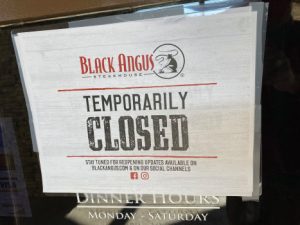City of Riverside Fire Department firefighter Anthony Henle, Station 7, is one of the first-responders receiving the Moderna COVID-19 vaccine in Riverside County at Riverside Corporation Yard in Riverside on Thursday, December 31, 2020. (Photo by Terry Pierson, The Press-Enterprise/SCNG)
Some 612,000 more coronavirus vaccine doses are headed to California as state leaders seek to speed up their rollout and figure out who should get them next.
On Monday, Jan. 4, Gov. Gavin Newsom said the state’s mass inoculation, which began Dec. 14, has powered up “like a flywheel,” and the pace should quicken in coming weeks.
By Sunday, about 454,000 doses had been administered, about a third of the nearly 1.3 million Pfizer-BioNTech and Moderna vaccines the state has received so far.
“It’s gone too slowly, I know, for many of us. All of us, I think, we want to see 100% of what’s received immediately administered in people’s arms,” Newsom said. “As we move into January, we want things to accelerate.”
The state is preparing to add more distribution sites, he said, and authorize more medical professionals to give shots, such as dentists, pharmacy technicians and members of the National Guard.
California is in the first leg of its vaccination campaign – Phase 1A – which is exclusive to about 3 million frontline medical workers and residents of nursing and assisted living homes.
The next leg, Phase 1B, will be split in two: First up will be people age 75 and older and high-risk workers such as teachers, childcare workers and more emergency services personnel. Next will be people ages 65 to 74, prisoners, homeless and high-risk workers in transportation, industrial, commercial, residential and “critical” manufacturing sectors.
It is not yet clear when the next phase will begin.
Phase 1C is expected to include people age 50 and older, and people ages 16 to 64 with underlying medical conditions or a disability that increases their risk of a severe coronavirus case. The third phase also includes workers in sectors such as energy, water, defense, communications and government operations.
More Phase 1C details will be hammered out by the state’s Community Vaccine Advisory Committee on Wednesday, Newsom said.
To date, California has designated its hundreds of thousands of doses to local health departments, which have distributed most of them to health care providers. Administrators at hospitals and clinics have formed their own schedules to vaccinate doctors, nurses and other health care workers. First responders have also received early doses of the vaccine.
Technicians and nurses with pharmacy chains CVS and Walgreens are tasked with vaccinating long-term care facility residents and staff.
State officials have said they expect the shots to be widely available to the general public by early summer.


















